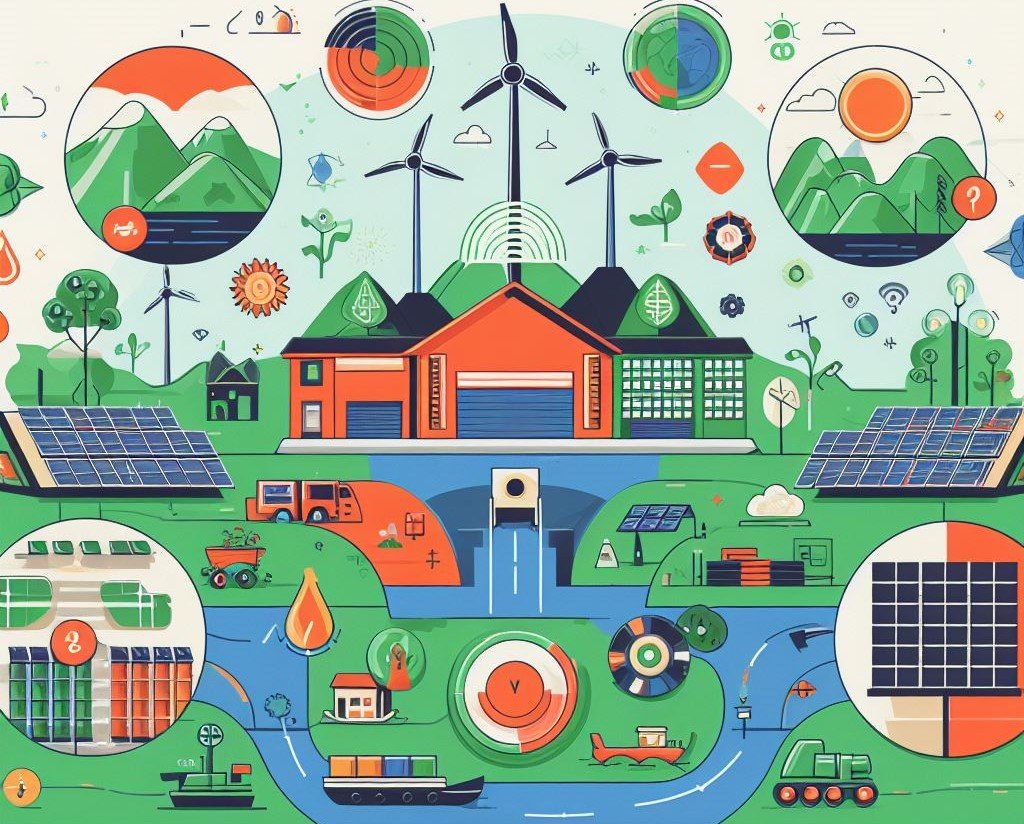Projects under the green credit system can yield advantages for both the corporate sector and the environmental sphere.
The fundamental principle of Lifestyle for Environment (LiFE) is to gently guide individual decisions and actions in a more sustainable direction. – Rusen Kumar
Environmental issues such as climate change, biodiversity loss, water scarcity, air pollution, and waste management are some of the most pressing challenges facing the world today. To address these challenges, various policies and regulations have been implemented by governments and international organizations. However, these measures are often insufficient or ineffective due to various barriers such as lack of awareness, compliance, enforcement, and financing.
To overcome these barriers and create a mass movement around environmental positive actions, the Indian government has proposed a novel initiative called the Green Credit System. The Green Credit System is designed to incentivize voluntary environmental actions undertaken by individuals, private sectors, small scale industries, cooperatives, forestry enterprises and farmer-produce organizations for their environmental actions.
The Green Credit System was first announced in the 2023-24 Union Budget and the draft implementation rules were notified by the Ministry of Environment, Forest and Climate Change (MoEFCC) in June 2023.

🍃🍃🍃
What is the Green Credit System?
The Green Credit System is a mechanism that complements the domestic carbon market. While the domestic carbon market focuses solely on CO2 emission reductions, the Green Credit System aims to meet other environmental obligations as well, incentivizing sustainable actions by various stakeholders1.
The Green Credit System is based on the concept of ‘Green Credit’, which means a singular unit of an incentive provided for a specified activity, delivering a positive impact on the environment.
🍃🍃🍃
Activities
The Green Credit can be generated by undertaking any of the following activities:
- Tree Plantation-Based Green Credit: To promote activities for increasing the green cover across the country through tree plantation and related activities.
- Water-Based Green Credit: To promote water conservation, water harvesting and water use efficiency / savings, including treatment and reuse of wastewater.
- Sustainable Agriculture-Based Green Credit: To promote natural and regenerative agricultural practices and land restoration to improve productivity, soil health and nutritional value of food produced.
- Waste Management-Based Green Credit: To promote sustainable and improved practices for waste management, including collection, segregation and treatment.
- Air Pollution Reduction-Based Green Credit: To promote measures for reducing air pollution and other pollution abatement activities.
- Mangrove conservation and restoration-based green credit: To promote measures for conservation and restoration of mangroves.
- Ecomark-based Green Credit: To encourage manufacturers to obtain ‘Ecomark’ label for their goods and services.
- Sustainable Building and Infrastructure-based Green Credit: To encourage the construction of buildings and other infrastructure using sustainable technologies and materials.
The Green Credits will be tradable and those earning it will be able to put these credits up for sale on a proposed domestic market platform. The buyers of the Green Credits can use them to meet their existing obligations under other legal frameworks or to enhance their environmental reputation.

🍃🍃🍃
How will the Green Credit System work?
The Green Credit System will be administered by the Indian Council of Forestry Research and Education (ICFRE), which will develop guidelines, processes and procedures for the implementation of the programme. The ICFRE will also establish thresholds and benchmarks for each Green Credit activity based on scientific criteria and best practices.
The participants of the Green Credit System will have to register themselves with the ICFRE and submit their proposals for generating or buying Green Credits. The ICFRE will evaluate the proposals and approve them if they meet the eligibility criteria. The ICFRE will also monitor and verify the implementation of the approved proposals and issue Green Credits accordingly.
The participants will be able to trade their Green Credits on a domestic market platform that will be developed by the ICFRE in collaboration with other stakeholders. The platform will facilitate transparent and efficient transactions of Green Credits among buyers and sellers. The platform will also maintain a registry of all the transactions and provide information on the supply and demand of Green Credits.
🍃🍃🍃
What are the benefits of the Green Credit System?
The Green Credit System is expected to have multiple benefits for both the environment and society. Some of the benefits are:
It will create a competitive market-based approach to environmental actions, thereby encouraging innovation, efficiency, and cost-effectiveness among participants.
It will provide additional incentives for voluntary environmental actions that go beyond compliance with existing regulations or standards.
It will enable participants to meet their environmental obligations in a flexible and convenient manner by buying or selling Green Credits as per their needs.
It will enhance the environmental reputation of participants by showcasing their contribution to environmental sustainability.
It will generate additional income for participants who generate or sell Green Credits, especially for those who belong to marginalized or vulnerable sections of society.
It will create awareness and education among participants and society at large about the importance of environmental conservation and restoration.
It will support India’s net zero goal of 2070 by reducing greenhouse gas emissions and enhancing carbon sinks.
It can help to reduce India’s environmental footprint by incentivizing sustainable practices and positive environmental actions.
It can create a new economic opportunity for entities that generate and trade green credits.
It can help India to meet its climate change and other environmental goals.
🍃🍃🍃
What are the challenges of the Green Credit System?
The Green Credit System is a novel and ambitious initiative that faces several challenges in its implementation and operation. Some of the challenges are:
It requires a robust and reliable system of measurement, reporting and verification (MRV) of the environmental impacts of the Green Credit activities. This may involve high costs, technical complexities, and data uncertainties.
It requires a clear and consistent definition and classification of the Green Credit activities and their eligibility criteria. This may involve trade-offs between environmental effectiveness, economic efficiency, and social equity.
It requires a fair and transparent mechanism of setting the prices of the Green Credits and ensuring their market liquidity. This may involve market risks, price volatility, and speculation.
It requires a strong and effective governance structure and regulatory framework to ensure the credibility, integrity, and accountability of the Green Credit System. This may involve legal disputes, institutional conflicts, and enforcement challenges.
It requires a high level of awareness, participation, and trust among the stakeholders of the Green Credit System. This may involve communication gaps, information asymmetry, and behavioral barriers.
Here are some of the potential challenges of the Green Credit System:
- It is important to ensure that the system is designed and implemented effectively, with clear and consistent rules and regulations.
- It is also important to ensure that there is robust monitoring and enforcement in place to prevent fraud and greenwashing.
- Overall, the Green Credit System is a promising initiative with the potential to make a significant contribution to India’s environmental sustainability.
🍃🍃🍃
Advantages of the Green Credit System
Promotes sustainable practices and positive environmental actions
The Green Credit System incentivizes individuals, organizations, and industries to adopt sustainable practices and undertake positive environmental actions. This can lead to a reduction in greenhouse gas emissions, improved air and water quality, and increased biodiversity.
Creates a new economic opportunity
The Green Credit System creates a new economic opportunity for entities that generate and trade green credits. This can help to boost investment in sustainable projects and create new jobs.
Helps to meet environmental goals
The Green Credit System can help India to meet its climate change and other environmental goals. For example, it can help to reduce greenhouse gas emissions, improve air and water quality, and protect forests.
🍃🍃🍃
Disadvantages of the Green Credit System
Overall, the Green Credit System has the potential to be a valuable tool for promoting sustainable practices and meeting environmental goals. However, it is important to address the potential challenges, such as greenwashing and complexity, in order to ensure that the system is implemented effectively.
Potential for greenwashing
There is a potential for entities to greenwash their activities by buying green credits without actually taking any meaningful steps to reduce their environmental impact. It is important to have robust monitoring and enforcement mechanisms in place to prevent this from happening.
Complexity
The Green Credit System can be complex to implement and manage. It is important to ensure that the rules and regulations are clear and easy to understand for all participants.
Cost
The Green Credit System may impose some costs on entities that participate in it. These costs could include the cost of generating green credits, the cost of trading green credits, and the cost of compliance with the rules and regulations.
🍃🍃🍃
Green Credit System Projects
A green credit system project is a project that aims to reduce the environmental impact of a business or organization by generating green credits. Green credits are tradable units of environmental value that can be earned by undertaking certain environment-friendly activities, such as planting trees, reducing energy consumption, or improving waste management.
Green credit system projects can be implemented in a variety of sectors, including:
Agriculture
Energy
Forestry
Industry
Transportation
Waste management
Examples of green credit system projects
Here are some examples of green credit system projects:
- A farmer plants trees on their land to generate green credits for carbon sequestration.
- A factory installs solar panels to generate green credits for renewable energy production.
- A city builds a new public transportation system to reduce air pollution and generate green credits for emissions reductions.
- A waste management company invests in new technologies to reduce waste-to-landfill and generate green credits for landfill gas avoidance.
Green credit system projects can be beneficial for both businesses and the environment. Businesses can use green credits to meet their environmental obligations, improve their reputation, and reduce their operating costs. The environment benefits by the reduction of greenhouse gas emissions, air and water pollution, and waste generation.
Steps involved in implementing a green credit system project
Green credit system projects can be a valuable tool for businesses and organizations to reduce their environmental impact and contribute to a more sustainable future.
Here are some of the steps involved in implementing a green credit system project:
- Identify the environmental activities that will be eligible to generate green credits.
- Develop a system for monitoring and measuring the environmental benefits of these activities.
- Establish a process for issuing and trading green credits.
- Promote the green credit system to potential participants.
- Monitor and evaluate the green credit system to ensure that it is achieving its objectives.
🍃🍃🍃
Promulgation of Green Credit Program (GCP) and Ecomark Scheme: Steering Sustainable Lifestyles and Environmental Preservation under the LiFE Initiative
Advancing LiFE: Pioneering Environmental Initiatives in India
In a bold move to advance the ‘Lifestyle for Environment’ (LiFE) movement, initiated by the Hon’ble Prime Minister in 2021, the Ministry of Environment, Forest and Climate Change (MoEF&CC) of India has launched two groundbreaking initiatives. These initiatives, the Green Credit Program (GCP) and the Ecomark Scheme are set to revolutionize the way India approaches climate change, sustainability, and eco-conscious practices.
Together, the Green Credit Program and the Ecomark Scheme signify a substantial leap towards sustainable living and environmental conservation in India. They encourage eco-friendly practices at both individual and collective levels, aligning with global sustainability goals and underscoring the government’s dedication to environmental stewardship.
Green Credit Program (GCP): A Market-Based Approach
Incentivizing Environmental Actions
The government of India announced on 13th October 2023, that the GCP will introduce a market-based mechanism that rewards voluntary environmental efforts from various stakeholders. It spans across diverse sectors, including individuals, communities, and private industries. Governed by an inter-ministerial Steering Committee, with the Indian Council of Forestry Research and Education (ICFRE) as the administrator, the GCP ensures effective implementation and oversight.
Focusing on Water and Forests
In its initial phase, the GCP emphasizes water conservation and afforestation. Draft methodologies for Green Credits have been proposed, awaiting stakeholder consultation. These benchmarks ensure consistent environmental impact and cross-sector applicability. The GCP also introduces a digital platform to facilitate project registration, verification, and Green Credit issuance. This platform aims to streamline the entire process, making it accessible and user-friendly.
Trading Green Credits
To participate, individuals and entities must register their activities on the official website. The Administrator, after a thorough verification process, awards a tradable Green Credit certificate. This certificate can then be traded on the Green Credit platform, providing tangible rewards for environmental actions.
Ecomark Scheme: Championing Eco-Friendly Products
Guiding Consumer Choices
Aligned with the LiFE philosophy, the Ecomark Scheme, updated on 13th October 2023, guides consumers towards sustainable choices. This scheme accredits household and consumer products meeting specific environmental criteria while maintaining high quality standards. Products bearing the Ecomark label assure minimal environmental impact.
Administered for Transparency
The Central Pollution Control Board, in partnership with the Bureau of Indian Standards, administers the Ecomark Scheme. This partnership ensures accurate labelling and prevents misinformation, promoting transparency and reliability in eco-friendly product choices.
Table of Important Facts
| Initiative | Focus Area | Date Notified | Governing Body | Key Activities |
|---|---|---|---|---|
| Green Credit Program (GCP) | Environmental Actions | 13th October 2023 | Inter-ministerial Steering Committee & ICFRE | Water Conservation, Afforestation, Green Credit Trading |
| Ecomark Scheme | Eco-Friendly Products | 13th October 2023 | Central Pollution Control Board & BIS | Accreditation and Labelling of Sustainable Products |
The Green Credit System in India
The Green Credit System in India is a market-based mechanism to incentivise voluntary environmental actions. It is still in its early stages of development, but the draft rules were released in June 2023 and are currently open to public feedback.
Under the Green Credit System, individuals, organisations, and industries can earn green credits for undertaking certain environment-friendly activities, such as:
- Increasing tree cover
- Promoting water conservation
- Adopting natural and regenerative agricultural practices
- Improving soil health and the nutritional value of food
- Managing waste effectively
- Reducing air pollution
Green credits can then be traded on a domestic market platform. This means that entities that generate more green credits than they need can sell them to entities that need more credits to meet their environmental obligations.
The Green Credit System is designed to achieve a number of objectives, including:
- Promoting sustainable practices and positive environmental actions in different sectors
- Helping India meet its climate change and other environmental goals
- Creating a new economic opportunity for entities that generate and trade green credits
The Green Credit System is complementary to India’s domestic carbon market, which was launched in April 2023. The domestic carbon market focuses solely on CO2 emission reductions, while the Green Credit System aims to meet other environmental obligations as well.
The Green Credit System is a promising initiative, but it is important to ensure that it is implemented effectively. This will require careful design of the rules and regulations, as well as robust monitoring and enforcement mechanisms.
🍃🍃🍃
Key takeaways
The Green Credit System is a pioneering and unique initiative by the Indian government to incentivize voluntary environmental actions by various stakeholders. The Green Credit System has the potential to create a mass movement around environmental positive actions and realize the vision of ‘Mission LiFE’ through pro-planet people and entities.
The Green Credit System also aims to complement the domestic carbon market and support India’s net-zero goal of 2070. However, the Green Credit System also faces several challenges in its implementation and operation that need to be addressed carefully and effectively.
(Copyright @ India CSR)
📢 Partner with India CSR
Are you looking to publish high-quality blogs or insert relevant backlinks on a leading CSR and sustainability platform? India CSR welcomes business and corporate partnership proposals for guest posting, sponsored content, and contextual link insertions in existing or new articles. Reach our highly engaged audience of business leaders, CSR professionals, NGOs, and policy influencers.
📩 Contact us at: biz@indiacsr.in
🌐 Visit: www.indiacsr.in
Let’s collaborate to amplify your brand’s impact in the CSR and ESG ecosystem.





























